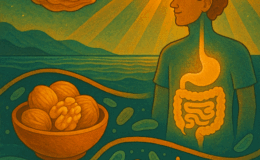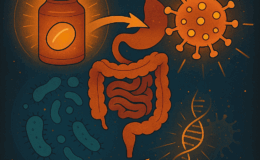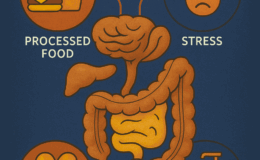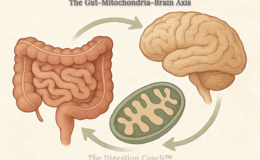Living with type 2 diabetes (T2D) or nonalcoholic fatty liver disease (NAFLD) can feel overwhelming, but there’s hope in a simple, science-backed plan. Research shows that low levels of betaine—a natural compound in beets and spinach—often plague these conditions, worsening blood sugar and liver fat. By combining betaine with fiber-rich foods, polyphenol-packed spices, and vigorous exercise, you can take charge and improve your health. Here’s how these tools work together to manage T2D and NAFLD, explained step-by-step.
 Why Type 2 Diabetes and NAFLD Need Help
Why Type 2 Diabetes and NAFLD Need Help
In T2D, your body struggles to use insulin, spiking blood sugar and stressing your liver. NAFLD piles on with fat buildup in the liver, fueling inflammation. Both share culprits: high homocysteine (a heart-risk chemical), oxidative stress, and a sluggish gut. Betaine, also called trimethylglycine, steps in as a methyl donor—converting homocysteine into safer methionine—and protects cells. Studies link low betaine to worse outcomes in T2D and NAFLD, but lifestyle changes can turn this around.
Step 1: Boost with Betaine HCl
What It Is: Betaine HCl is betaine paired with hydrochloric acid and is sold as a supplement to aid digestion and metabolism.
How It Helps Type 2 Diabetes and NAFLD:
- Lowers Homocysteine: Betaine donates methyl groups, cutting homocysteine levels that climb in T2D and NAFLD, easing heart and liver strain.
- Reduces Liver Fat: Animal studies show that betaine slashes liver fat by boosting fat breakdown—a game-changer for controlling diabetes and a fatty liver.
- Supports Digestion: The HCl improves nutrient absorption, which is critical when your gut’s off-balance.
Action Plan: Start with 600 mg per meal (1.5–3 g daily aligns with research). Check with your doctor—too much acid might irritate sensitive stomachs.
Step 2: Power Up with Dietary Fiber
What It Is: Fiber’s the indigestible part of plants—oats, lentils, apples—fueling your gut.
How It Helps Type 2 Diabetes and NAFLD:
- Steadies Blood Sugar: Soluble fiber slows sugar absorption, easing insulin demand in T2D.
- Cuts Inflammation: Fiber feeds gut bacteria that make short-chain fatty acids (SCFAs) like butyrate, calming inflammation in NAFLD.
- Boosts Betaine: A healthier gut spares choline (betaine’s raw material) from being wasted, aiding efforts to control diabetes and fatty liver.
Digestion Coach Action Plan: Aim for 25–30 g daily: 1 cup of lentils (15 g), an apple (4 g), and oatmeal (5 g). Add gradually with water to avoid gas.
Step 3: Spice It Up with Polyphenols
What They Are: Polyphenols are antioxidants in spices—curcumin in turmeric, quercetin in coriander, phenolic acids in cumin.
How They Help Type 2 Diabetes and NAFLD:
- Fight Inflammation: Curcumin blocks inflammatory signals (like NF-κB), reducing liver damage and insulin resistance.
- Shield Against Stress: Polyphenols neutralize free radicals, sparing betaine from cleanup duty.
- Aid Gut Health: They foster good bacteria, amplifying SCFAs and betaine benefits to manage T2D and NAFLD.
Digestion Coach Action Plan: Use 1–2 tsp daily of turmeric on rice or lentils (with pepper for absorption) and cumin in soups. Supplements (e.g., 500 mg curcumin) can boost the effects.
Step 4: Move More with Vigorous Exercise
What It Is: Vigorous exercise—running, fast cycling—pushing your heart rate up for 30–45 minutes.
How It Helps Type 2 Diabetes and NAFLD:
- Improves Insulin Use: Muscles grab glucose without much insulin, easing T2D control.
- Burns Liver Fat: Studies show 150–300 minutes weekly melts visceral fat, shrinking NAFLD’s grip.
- Lifts Gut and Mood: Longer sessions grow beneficial bacteria and lower stress hormones, supporting efforts to improve metabolic health through lifestyle changes.
Digestion Coach Action Plan: Start with 20 minutes, 3 times a week, and build to 30–45 minutes. Try jogging (6 mph) or HIIT. Rest days matter—consult your doctor first.
Your Daily Blueprint
- Breakfast: Oatmeal with turmeric.
- Lunch: Lentil soup with cumin and coriander, 600 mg betaine HCl.
- Snack: Apple with paprika-sprinkled nuts.
- Dinner: Chicken with broccoli and turmeric, 600 mg betaine HCl.
- Exercise: 30-minute jog or brisk walk.
Digestion Coach Daily Goals: Shoot for 25–30 grams of fiber, 1–2 tsp spices, 8.5 g betaine HCl, and 45-60 minutes of combined cardio and strength training. Pro Tip: Betaine HCl should be taken with meals containing protein, especially animal protein.
How It All Fits Together
Betaine tackles homocysteine and liver fat directly. Fiber steadies sugar and gut health, amplifying betaine’s reach. Polyphenols shield against inflammation, and exercise burns fat while boosting insulin and gut bugs. Together, they manage T2D and NAFLD by hitting multiple targets—studies suggest this combo could lower liver enzymes and HbA1c (a T2D marker), helping you control diabetes and a fatty liver.
Watch Outs
- Ease In: Too much betaine HCl, fiber, or exercise can upset your stomach or joints—start slow.
- Personalize: Your needs vary, and severe NAFLD might need extra help.
- Check with Pros: Doctors ensure this fits with meds or conditions.
The Takeaway
To manage type 2 diabetes and NAFLD, betaine and lifestyle changes—fiber, spices, exercise—team up to fix what’s broken. It’s not a quick fix, but steady steps can lighten your load, steady your sugar, and clear your liver. You’ve got this—one meal, one move at a time, to improve metabolic health with lifestyle.










